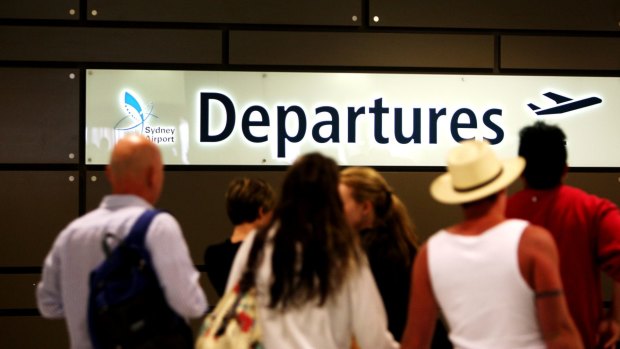This was published 6 years ago
Australia's airport transport: The number one problem - it's not the queues
By Ben Groundwater

The crucial problem with Australia's airports is not the queues.Credit: Peter Braig
Anyone who has used an Australian airport already knows what the problem is. You encounter it before you've even arrived. You go through it every single time. It's unavoidable.
Of course, this problem isn't the only one. There are plenty of complaints you could make about the terminals across the country. These are venues where the wishes of the clients (aka, the air passengers) seem to have been put last, where new shops and other places to spend money are trumpeted as progress, where hassles and discomfort are part of accepted practice.
It's only once you fly to Asia that you realise how things at airports could be. You go to Singapore's Changi and discover that, as well as all the new shops, there are facilities people can use to actually make their experience there more pleasurable, things like butterfly gardens and rooftop pools and live sport playing on a giant screen. Or you go to Seoul-Incheon and discover a golf driving range and a world-class museum.
Queuing time at these airports is minimal. Security is tight but efficient. You're in and out of there with the minimum of fuss.
That's what people really want in an airport. Failing that though, most of us would just accept somewhere that is relatively cheap and easy to get to. And that's the problem in Australia; that's where most of our airports are letting us down.
There was a great story in The Sydney Morning Herald on the weekend about getting to and from the airport in Sydney. This is one of only two cities in Australia with a rail link to the airport, and yet the cost of that link is so spectacularly high as to render it almost unusable. At up to $17 per person in peak hour to take the train from Central Station to the domestic or international terminals, it's far cheaper to take an Uber if you have more than one person. Even if you're on your own, it's close.
And you see the results of that disincentive to take the train every time you visit Sydney airport. There are huge queues of cars these days just to get dropped off, particularly at the international terminal. Traffic stretches down the road in either direction at busy times in the early morning.
See also: Secret routes: The cheapest ways to get to Australia's airports
We've got to the point where travellers are looking for sneaky ways in now, to get around the huge "access fee" that rail passengers are forced to pay, and the queues that everyone in taxis and Ubers will be experiencing. People are taking the train to nearby Wolli Creek and walking the rest of the way. And this should be Australia's flagship airport.
And though Sydney seems to be the worst offender, it's not as if many of the rest of Australia's airports are any better. Brisbane at least has a rail link, which at $15 for a 22-minute, 18-kilometre journey from the city is not too horrendously priced (Central to the airport in Sydney is half that distance, but costs more).
Melbourne's airport, meanwhile, in Tullamarine, is notoriously expensive and difficult to access. There's no rail link, leaving passengers at the mercy of taxis, Ubers and the Skybus. The cheapest of those transport options, Skybus, is $19 each way (unless you want to spend more than an hour getting to Tullamarine from the city on regular public transport). Taxis are more than $55 each way, while an Uber will be more than $40.
Politicians have talked of vague plans for an airport rail link in Melbourne, but there's nothing concrete just yet – at best it seems it will take at least a decade.
In Hobart, an airport shuttle will cost you $19. In Perth, the domestic and international terminals are a crazy 9 kilometres apart, and there are very limited public transport options for getting into the city. The Gold Coast's airport is not even really in the Gold Coast.
Adelaide Airport, at least, is close to the city, and it doesn't cost too much to access Canberra's terminal.
For a nation of travellers though, we seem to have to put up with some fairly average conditions in which to do that travel. Pretty much every major airport in Australia has some sort of access issue, and by far the two busiest – Sydney and Melbourne, which between them host the world's second-busiest air route – are also by far the most expensive and problematic.
Airport owners and designers seem to think we want more shops and restaurants at these places, fancy-looking facilities that peddle all of the mod-cons. Those are the things they boast about improving.
But surely what travellers actually want is ease of access. They want something that mirrors Hong Kong or Kuala Lumpur – airports with fast, frequent and affordable rail links that make travel just that little bit easier.
Solve that, and then we can think about the shops.
Do you think Australia's airports are difficult to access? Should Sydney's rail link be cheaper? Should Melbourne have better public transport? What is Australia's best airport?
Sign up for the Traveller Deals newsletter
Get exclusive travel deals delivered straight to your inbox. Sign up now.